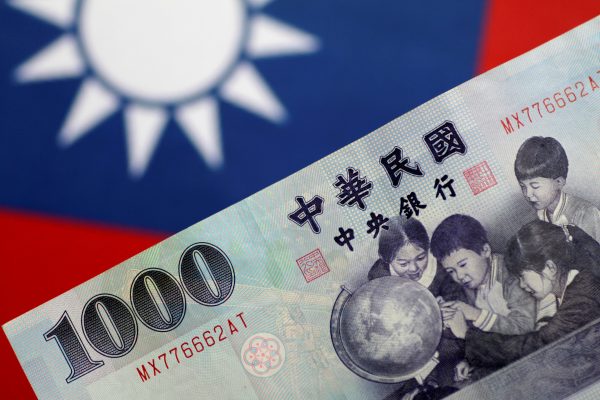An SWF brings not just the potential for higher financial returns but also an opportunity to broaden Taiwan’s visibility as its international presence grows ever marginalised. An SWF has been explored before without any substantial progress. Conservative policymaking and lingering fears of the corruption that characterised the pre-democracy era stymied the idea for decades. Despite this, Taiwan has already centralised several of its large public funds under the Bureau of Labor Funds. The traditional vehicle to an SWF — reallocating part of Taiwan’s massive foreign exchange reserves — is not yet in motion.
Among the Asian Tiger economies, Taiwan is the only country that has not reallocated part of its reserves beyond low-risk instruments. Hong Kong has placed part of its reserves into a separate portfolio while South Korea and Singapore have both established distinct SWFs.
Taiwan’s reserves are the sixth largest in the world, totalling US$462 billion in 2018. This massive stockpile is disproportionately large compared to its peers. Taiwan’s reserves could cover nearly 19.5 months of imports, significantly higher than the coverage ratios of South Korea (seven months) and Singapore (five months).
Taiwan’s enormous reserves are partially a product of its exclusion from international financial arrangements. Taiwan cannot rely on either the IMF or the Chiang Mai Initiative during a financial shock. Yet Taiwan still has ample room to move some of its reserves into an SWF. Carving out 10 per cent of the reserves would only reduce import cover to 17.5 months while giving Taiwan a US$46 billion SWF, larger than the Brunei Investment Authority.
Apart from reserves, Taiwan has other public funds which can be managed under an SWF to streamline costs and improve efficiency. The Canadian province of Alberta operates a similar model through the Alberta Investment Management Corporation where several disparate public funds are managed through one government investment manager.
Taiwan has a similar assortment of funds, including the funds managed by the Bureau of Labor Funds, along with the Public Service Pension Fund and the National Stabilization Fund. These funds have a combined asset size of US$190 billion. If this is consolidated with a 25 per cent reallocation of reserves, the resulting fund would total over US$305 billion, giving Taiwan a formidable SWF that approaches Qatar’s QIA in size.
An SWF provides several potential benefits. The potential for higher returns is perhaps the most obvious. Given Taiwan’s ageing population and generous social system, the potential to tap into greater returns to meet future needs is indeed alluring. The indirect benefits of a SWF represent considerable value for Taiwan as well. A major SWF can deepen the financial sector and generate network effects, growing Taiwan’s appeal for the retinue of bankers, lawyers and other professionals that revolve around such funds. This would expand the opportunities available in Taiwan and help to combat the brain drain facing the country.
Perhaps the most tantalising benefit for Taiwan is global visibility. A major fund immediately puts Taiwan on the map for international bankers and investors. An SWF could join organisations like the International Forum for Sovereign Wealth Funds (IFSWF) where statehood is not a prerequisite. A fund could also give Taiwan a voice in shaping the global investment agenda. In short, an SWF could amplify Taiwan’s soft power in an arena that is less constrained by political restrictions.
Resistance to an SWF centres on fears of corruption, mismanagement and political interference. Indeed, many countries have wrestled with these concerns when establishing their funds as well, resulting in the adoption of the Santiago Principles as a paradigm for SWF governance. The Principles specifically outline best governance practices and have been ratified by all members of the IFSWF. A Taiwan SWF should endorse these principles and commit to maximum transparency of its practices and operations.
Oversight through independent board members and third-party monitoring can add an additional layer of separation. Independent hiring practices can be established to ensure that employees are selected through merit alone. Furthermore, potential entanglement with domestic economic and political stakeholders can be minimised through an offshore-only investment mandate. These measures can give Taiwan a fund that adheres to world-class standards of governance.
Only an SWF of sufficient scale could unlock the benefits described above. Mobilising Taiwan’s massive foreign exchange reserves would be the logical starting point for this endeavour, but the assortment of other funding sources described represent additional ways to magnify the fund’s firepower.
As President Tsai Ing-wen begins her second term, her government should strongly consider both the financial possibilities and the wide-ranging intangible benefits that an SWF can bring. Improving returns is always attractive but the ability to boost Taiwan’s visibility on the world stage is a benefit that Taiwan cannot ignore.
Shaokai Fan is a Research Affiliate with the SovereigNet program at Tufts University.


Can’t blame Taiwan about its fear of corruption, mismanagement, and political interference regarding SWF when you look at how the American government has squandered its money for the last 39 years.